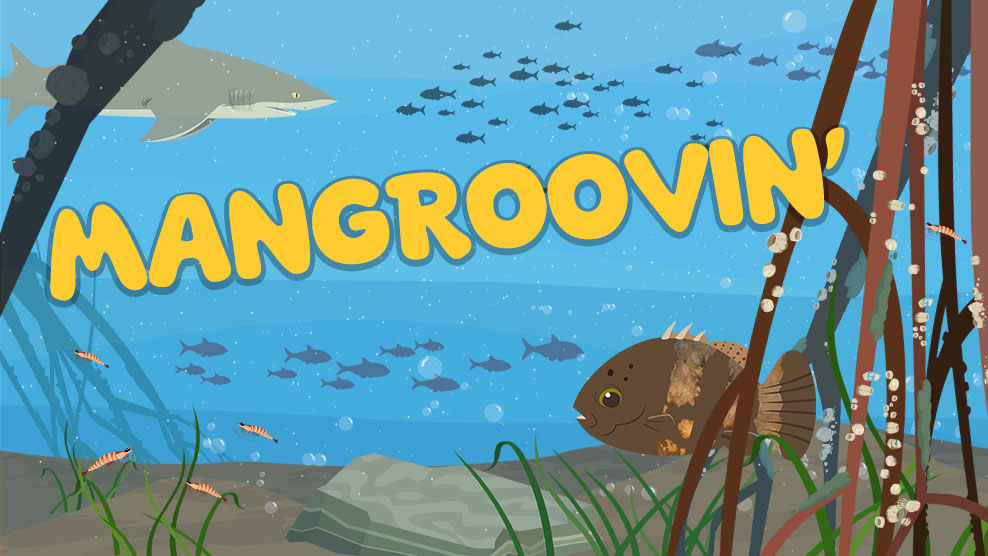Mangroovin’
What Is This Game?
Eat–but don't be eaten! In this game, kids take on the role of baby groupers, fish who grow up in the shelter of mangrove roots. Players need to swim into open water to find food, like shrimp, without falling prey to hungry predators, like sharks and herons. The more points players get, the more digital stickers they can buy for their awesome collection!
Conversation Starters
Ask:
- How do animals depend on mangrove trees?
- What role do mangrove trees play in protecting the shoreline? Think about where their roots are located. How might the roots of a tree help keep soil from washing away?
- What bodies of water are near where you live? What kinds of predators and prey live there, and how do they use their habitat?
- How would you change this game so that you could play it from the point of view of a predator?
Explore Some More
Explore Erosion
Erosion is a gradual wearing away of the surface of the Earth. Along shorelines, roots help minimize erosion by holding soil in place and preventing waves from washing it away. You can often find examples of erosion in action right around your neighborhood. After a rainfall, look at the ground below the downspouts of your house or other building. What does the soil look like? The rushing water pouring through a downspout often erodes the soil below. Next time you're near a river, lake, or other body of water, take a look at the shoreline. Are there plants growing right up to the shore? Can you see their roots? How do sections of the shore with plants compare to sections that don't have plants?
Take Cover!
Take a walk around your schoolyard or neighborhood and have students survey it through the eyes of a baby animal. Ask questions such as, what might be some ideal places to hide from predators? Where might you find food, and how would you avoid predators while looking for food? If you see an animal, such as a squirrel, rabbit, or bird, have students sit quietly and observe its behavior. How much time does it spend in the open? What happens when the animal notices another animal, or notices you? Can you predict where the animal might seek shelter? If the animal does move to shelter, does it move to where you predicted it would go, or does it go someplace else?

